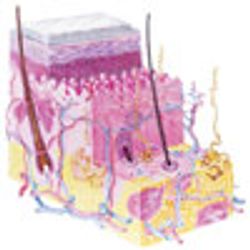Industry Expert Q&A with Matt Hicks
Matt Hicks, COO and counsel at Federal Equipment Company discusses purchasing used equipment, the potential cost savings, and the strategies companies should consider in redeploying surplus equipment.
PharmTech: What are the primary reasons a company might want to consider purchasing used equipment?
Hicks: Many pharmaceutical companies consider used equipment for purchase price savings and to cut delivery time for needed equipment.
PharmTech: How old is ‘late-model’ equipment, and what cost savings can be obtained?
Hicks: The answer here really depends upon the equipment, the original equipment manufacturer (OEM), and the maintenance program. Many types of equipment can have long, productive lifespans-the year of manufacture should not always determine whether a machine is still worthy of use in production. Obsolescence for pharmaceutical process equipment, as a general rule, is when that machine is no longer fit for use in a cGMP environment or there is no support network for the equipment through in-house knowledge, the OEM, or a reliable third-party provider.
We acquire our inventory from the top names in pharmaceutical manufacturing-companies that purchase higher-quality equipment from the start, engineer it to last, and have robust fixed-asset management and preventative maintenance programs supporting that equipment. This equipment is more likely to be of a higher quality and in better shape so that OEMs can provide the bulk of the support. The buyer can thus trust each purchase and have that equipment installed and ready for production as soon as possible. Our inventory can be delivered in weeks or even days, compared with months for built-to-order equipment.
PharmTech: When should a company consider redeploying surplus equipment?
Hicks: Redeployment of existing equipment makes a great deal of sense because it maximizes the potential return for that idle equipment. Redeployment puts that equipment in a place where it can produce saleable product rather than just being sold for the equipment’s own value. Additionally, the equipment history is completely transparent and records can be easily transferred without too many intellectual property concerns.
With that said, a redeployment program will only work if there are multiple sites in the company’s network with similar equipment requirements. There must also be a financial strategy that makes redeployments attractive to the receiving site. This strategy mainly concerns the valuation of the equipment for the receiving site (e.g., net book value or fair market value) in addition to the removal and shipping costs.
Finally, there should be some strategic review of the transfer against a capital expenditure budget or some other identified objective. If a transfer cannot be justified against a capital budget or, for example, as a risk-mitigation strategy, these would-be assets may just go from storage in one facility to storage in another facility, where they sit inside a crate in a warehouse or take up valuable manufacturing floor space without ever making anyone any money, which is why they were made available in the first place.
Article DetailsPharmaceutical Technology
Vol. 39, No. 5
Page: 62
Citation: When referring to this article, please cite it as “Industry Expert Q&A with Matt Hicks,” Pharmaceutical Technology39 (5) 2015.


